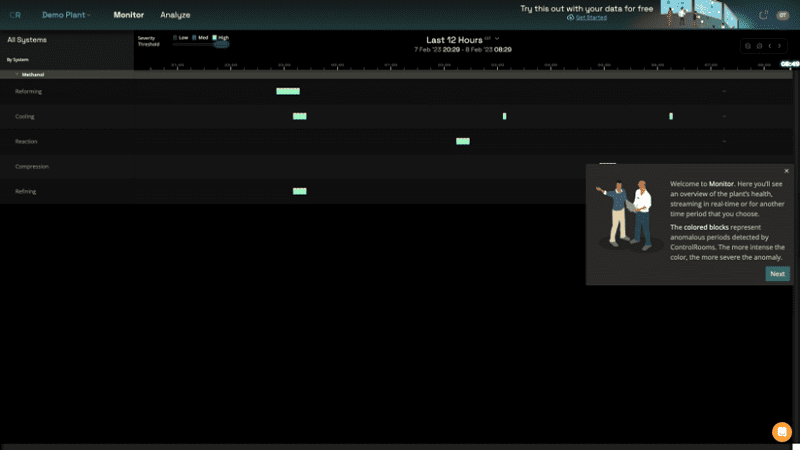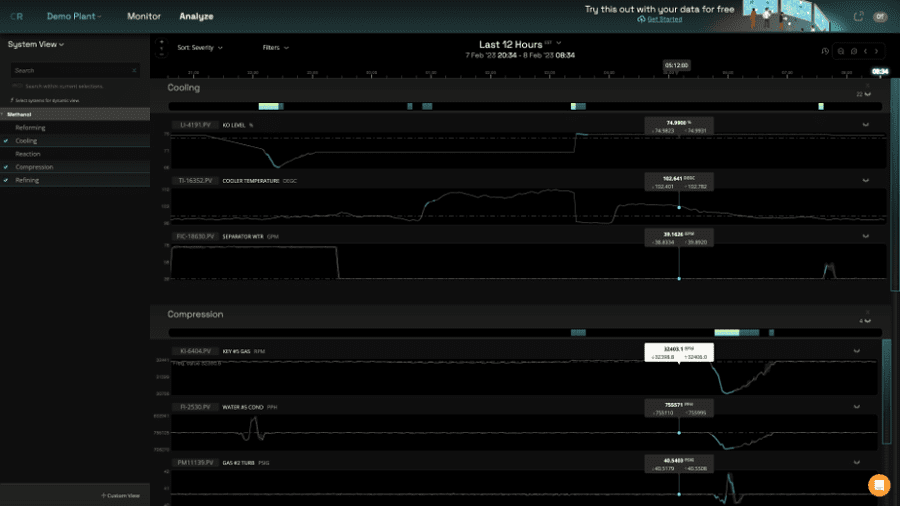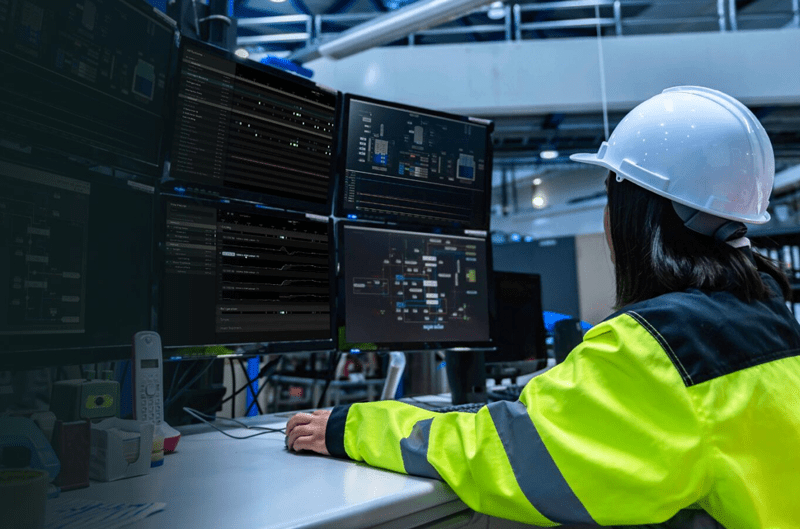Despite ample telemetry and robust alarm management in place, energy producers continue to experience unplanned trips, flaring and other surprises that result in significant downtime, emissions and costs. While, undoubtedly, many interruptions are unavoidable in the moment, a surprisingly large percentage of interruptions could have been avoided if operators were given a heads-up. What percentage is avoidable? Actual numbers will vary from case to case, but a liquified natural gas (LNG) operations executive put it this way: “Last year, we lost $100 million due to trips, and 80 percent of those trips were avoidable.” That’s a lot of avoidable loss.
The energy industry has undergone rapid advancement in technology in recent decades. From subtle advancements, such as the widespread use of automation to groundbreaking innovations like horizontal fracking, these advancements have benefited the energy sector and humanity. Unfortunately, one area seems to have been neglected: Troubleshooting in control rooms of energy facilities such as refineries, crackers and LNG processing.
Troubleshooting, tracing and correcting faults or issues in systems is an all-day, everyday task for control room operators, yet remains nearly as manual and laborious today as it was 1980. Any operations superintendent will tell you (perhaps off the record) that troubleshooting is an “inexact science” at best. As a first layer of troubleshooting defense, operators rely on traditional alarm systems; these systems are irreplaceable but imperfect.
Typically, an alarm sets off a “needle-in-the-haystack” search party for a few errant “trends.” These exercises, conducted in the spirit of troubleshooting, are exhausting, inefficient and often involve several parties, including instrumentation specialists and even supervisors or engineers. Other times, however, the alarms are ignored, and the “goose chase” is averted altogether. Given the noise of a typical alarm system, ignoring some or most of them is not as rebellious as one may think. But it does indeed set the scene for “cried wolf” situations: Actual issues that go unnoticed through the deluge of amber alarms that manifests in production interruptions.
Is there a better way? There really wasn’t until we created (and now lead) a new category of tool: The troubleshooting platform. A purpose-built, AI native application that allows operators and engineers to troubleshoot effectively, collaboratively and efficiently in real-time.

ControlRooms.ai leverages machine learning algorithms to analyze tens of thousands of tags (plant data) in real-time, and surfaces specific anomalies that could lead to unplanned trips or flaring events. Detecting hard-to-find, emerging issues is the first half of the battle. The second, equally important part is surfacing these issues in real-time, in an intuitive, actionable format that allows energy producers to take proactive measures to address them and nip them in the bud.
How is this different from the traditional alarm systems you surely already have in your plant? Unlike your trusty ol’ alarms (which are essential, but introduce the aforementioned problems), ControlRooms.ai does not rely on pre-programmed, static, biased rules to identify anomalies. Instead, its AI learns nominal plant behavior on its own. The AI flags issues in their infancy before humans or alarms can detect them.
A classic example of this can be found in the infamous tale of the “sticky valve.” Imagine an operator adjusts a setpoint on a valve position. All seems well at first except, in reality, the valve is “stuck” and doesn’t move as expected. A wide spectrum of suboptimal outcomes can result from this: Sometimes the unit trips, other times catastrophe ensues. The reason this well-known issue often sneaks by undetected is that this deleterious condition does not immediately cause data points to exceed the pre-set alarm thresholds. By the time alarms go off, it’s often too late. With a troubleshooting platform that runs a dynamic AI model, this issue would be flagged as anomalous since the valve position setpoint and corresponding readings were inconsistent.
Moreover, it helps eliminate noise, by only flagging issues that are deemed truly anomalous and not the many naturally occurring (noisy) ebbs and flows experienced in complex fluid processing facilities. The algorithms continuously evolve and adapt to new data, ensuring the troubleshooting platform’s dynamism and efficacy.

How much faster is troubleshooting with AI? Ten times faster. One plant manager, who used a troubleshooting platform for the first time said, “This would have taken me all day… staring at 60 trends… And even then I may have missed it…” ControlRooms.ai reduces the hours-long task of triage to a single click.
ControlRooms.ai is quick to set up and easy to use: It was designed to slot right into a variety of legacy plant systems. Energy producers can start seeing the value of this turnkey troubleshooting platform in just minutes, without having to make any changes to their current systems and without lengthy consulting engagements.
As energy production becomes more complex and geopolitics more unpredictable, it’s critical that producers are doing all they can to maximize production stability: A plug-and-play troubleshooting platform offers rare “low hanging fruit” in energy. AI-assisted troubleshooting platforms like ControlRooms.ai offer a game-changing solution that can help energy producers reduce surprise events, minimize emissions and maximize efficiency.
If you’re an energy producer looking to stay ahead of the curve and improve your troubleshooting capabilities, visit ControlRooms.ai today.
Omar A. Talib serves as president of ControlRooms, the first AI-assisted troubleshooting software for energy and chemical producers. Before founding ControlRooms, he served as managing director of Splice Machine, where he created and led its critical infrastructure and defense division. He seeded, built and launched Livewire, the operational AI platform for critical infrastructure. Prior to Splice Machine, Talib founded Crescent Groupe S.à r.l., a tech-focused merchant bank, where he led several strategic partnerships to scale breakthrough technologies. Talib established a consortium with Granahan McCourt to build a global manufacturer of high throughput satellite equipment. He strategically positioned Crescent to deliver AI-driven energy efficiency solutions for energy producers in oil-exporting countries as they rapidly eliminated domestic subsidies. Prior to Crescent, Talib was a commodities trader at Goldman Sachs in New York. Talib holds a double bachelor’s degree from Georgetown University, and currently serves on the board of Electrodollar Energy Co.
Oil and gas operations are commonly found in remote locations far from company headquarters. Now, it's possible to monitor pump operations, collate and analyze seismic data, and track employees around the world from almost anywhere. Whether employees are in the office or in the field, the internet and related applications enable a greater multidirectional flow of information – and control – than ever before.




